Alresford, Hampshire
Up to 1834
A parliamentary report in 1777 recorded a parish workhouse in operation at Hinton Ampner with accommodation for up to 6 inmates.
'Peppercorn Cottage' in Cheriton is said to have been at one time used as the parish poor-house.
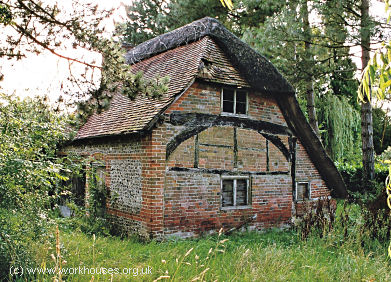
Cheriton former parish poorhouse, 2004.
© Peter Higginbotham.
After 1834
Alresford Poor Law Union was formed on 31st March 1835. Its operation was overseen by an elected Board of Guardians, 19 in number, representing its 18 constituent parishes as listed below (figures in brackets indicate numbers of Guardians if more than one):
Hampshire:
New Alresford (2), Old Alresford, Beauworth, Bighton, Bishop's Sutton, Bramdean, Brown Candover, Cheriton, Chilton Candover, Hinton Ampner, Itchen Stoke, Kilmiston, Northington, Ovington, Ropley, Swarraton, Tichborne, West Tisted.
Later Addition: Godsfield (from 1858).
The population falling within the Union at the 1831 census had been 6,971 with parishes ranging in size from Swarraton (population 120) to New Alresford (1,437). The average annual poor-rate expenditure for the period 1831-34 had been £6,086 or 17s.6d. per head of the population.
A new Alresford Union workhouse was erected in 1835-6 at Tichborne Down to the south of New Alresford. Intended to accommodate 280 inmates, the Poor Law Commissioners authorized the sum of £5,350 on its construction. The building was designed by Edward Hunt who was also the architect of the Wiltshire workhouses of Alderbury and Wilton. His design for Alresford followed the model cruciform or "square" plan published by the Poor Law Commissioners in 1835. An entrance block at the south contained the Guardian's board-room, porter's room etc. To the rear, four accommodation ranges for various classes of inmate radiated from a central supervisory hub, females at the west of the site and males at the east, adluts at the rear and children at the front. The workhouse location and layout are shown on the 1909 map below.
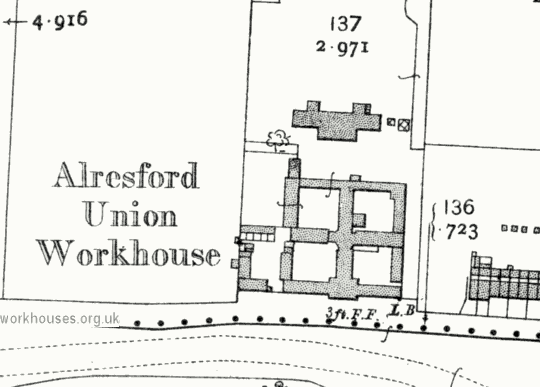
Alresford workhouse site, 1909.
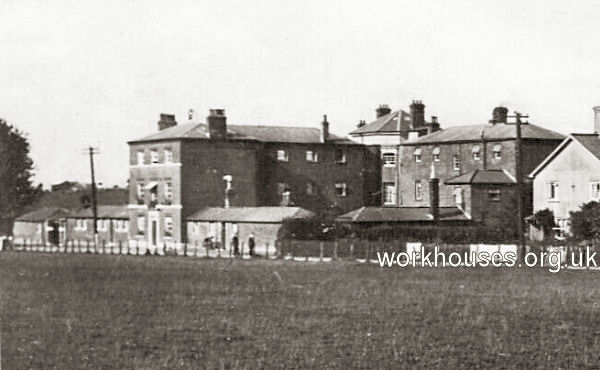
Alresford workhouse, from the south-east, early 1900s.
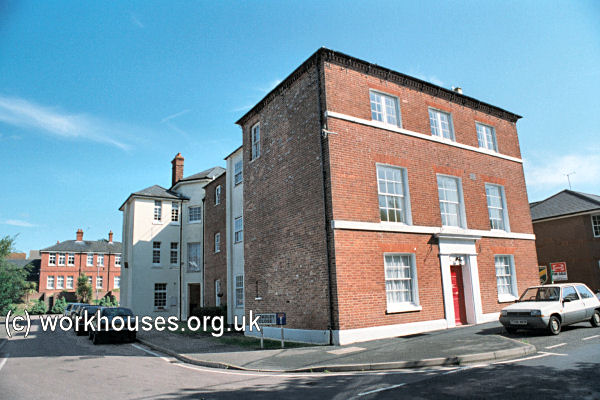
Former Alresford workhouse, from the south-west, 2000.
© Peter Higginbotham.
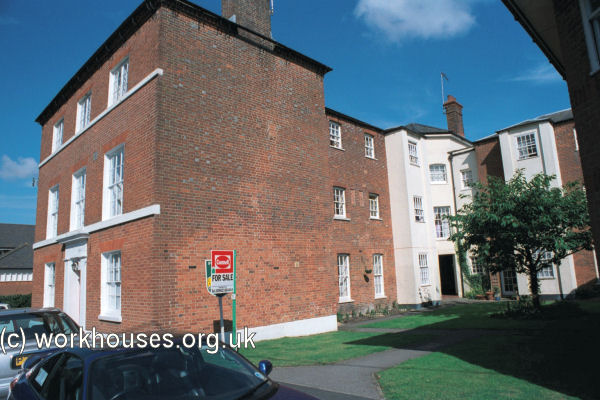
Former Alresford workhouse, from the south-east, 2000.
© Peter Higginbotham.
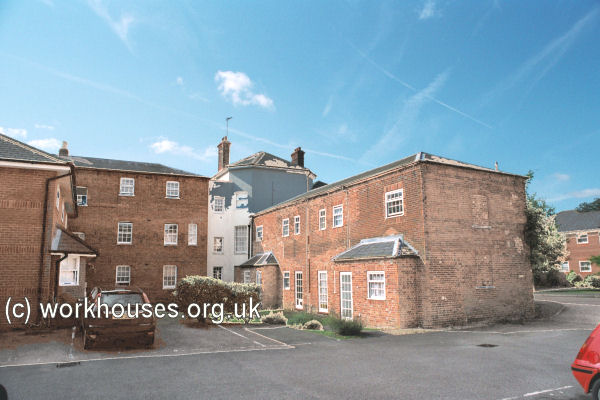
Former Alresford workhouse, from the east, 2000.
© Peter Higginbotham.
In 1866, the workhouse was visited by Poor Law Inspector Mr. W.H.T. Hawley. His report noted that:
Furniture.— The beds are stuffed with chaff. There are troughs for washing in each ward, and hand-basins for the sick.
Inmates.— The inmates are classified in accordance with the order. The clothing supplied to both men and women is sufficient, and they have the regular changes of linen prescribed by the order. The able men are set to pound stones; the aged men and boys work in the garden. The women and girls are employed in needlework, washing, and the usual household work. There is an open down in the front of the house, where the old men are allowed to walk when permitted ; and the children are taken out for a walk twice a week.
Medical Attendance.— The drugs for the use of the patients in the infirmaries are supplied by the medical officer.
Nursing.— There is a paid nurse, and the nursing, both night and day, is satisfactorily performed.
Chaplain.— There is a chaplain, who gives a full service on Sundays, and one other day in the week besides. The inmates who dissent from the Established Church attend their own respective places of worship.
School.— Both schools are under the charge of the schoolmistress, and the children are not allowed to mix with the adults.
Generally.— No improvement is required in this workhouse beyond the construction of separate sick wards for the children.
In the early hours of 19 May 1907, a lightning strike caused a fire which destroyed the west wing of the workhouse, where aged women and children were housed.
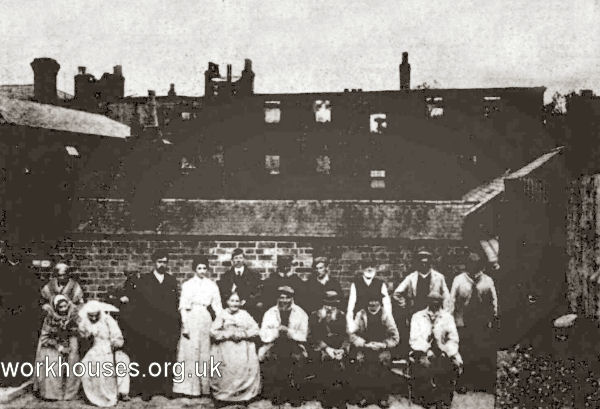
Alresford workhouse staff and inmates on day after the fire, 1907.
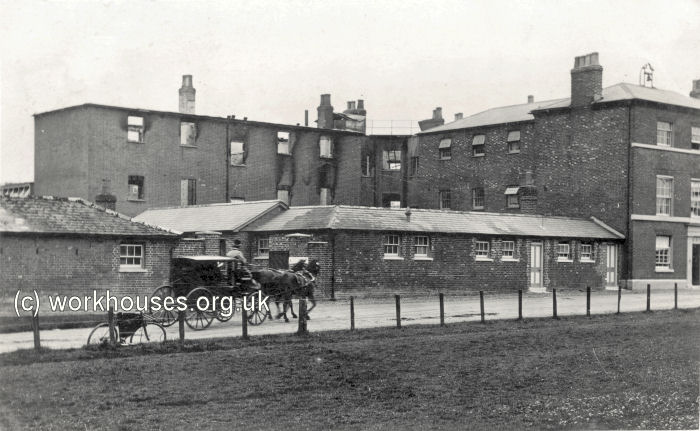
Alresford workhouse after the fire, 1907.
In 1907-8, the damage was repaired and an infirmary was also erected at the rear of the workhouse, designed by Messrs Cancellor and Hill of Winchester. The building work was carried out by Messrs Garce and Sons, of Clatford, Andover, at a total contract price of £3,120
.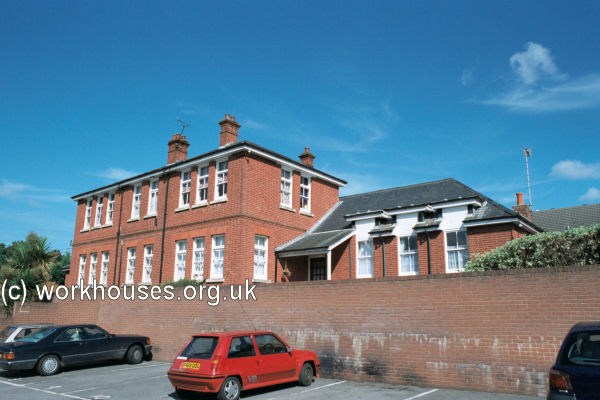
Alresford former workhouse infirmary, 2000.
© Peter Higginbotham.
After 1930, the former workhouse became known as Alresford Public Assistance Institution. The site later became Tichborne Down House Hospital.
The surviving buildings have now been converted to residential use.
Staff
Inmates
Records
Note: many repositories impose a closure period of up to 100 years for records identifying individuals. Before travelling a long distance, always check that the records you want to consult will be available.
- Hampshire Record Office, Sussex Street, Winchester SO23 8TH. Very few local records survive — holdings include Guardians' minute books (1835-1918).
Bibliography
- Higginbotham, Peter The Workhouse Encyclopedia (2014, The History Press)
Links
- None.
Unless otherwise indicated, this page () is copyright Peter Higginbotham. Contents may not be reproduced without permission.


